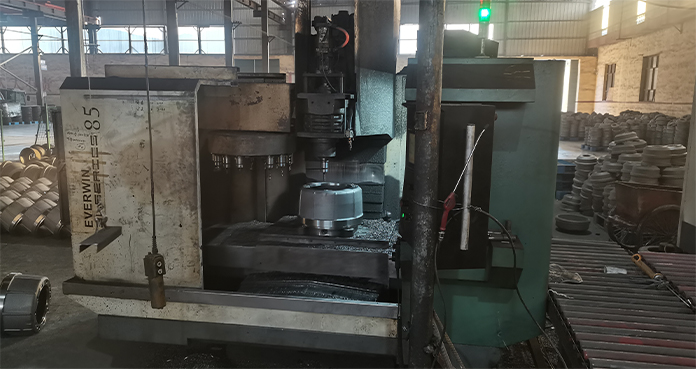dec . 07, 2024 16:48 Back to list
car brake drum problems
Understanding Car Brake Drum Problems Diagnosis and Solutions
When it comes to vehicle safety, the braking system is one of the most critical components that every driver should monitor closely. Among the various braking systems used in vehicles, drum brakes remain a common choice, particularly for older cars and certain models. However, like any mechanical system, brake drums can encounter problems that, if left unaddressed, might compromise vehicle safety and performance. This article delves into the common issues associated with car brake drums, their symptoms, and potential solutions.
What is a Brake Drum?
The brake drum is a crucial part of the drum brake system, which operates through friction. When the driver presses the brake pedal, hydraulic pressure forces the brake shoes against the inner surface of the drum, slowing the vehicle down. While effective, this system can develop various issues over time due to wear and tear, improper adjustments, or lack of maintenance.
Common Brake Drum Problems
1. Worn Brake Shoes One of the most frequent issues with brake drums arises from the brake shoes themselves. Over time, the friction material on the shoes can wear down. Symptoms include reduced braking efficiency, increased stopping distance, and a spongy brake pedal. If you notice a grinding noise when braking, it might be a sign that the shoes have worn too thin and are no longer making adequate contact with the drum.
2. Out of Round Drums Brake drums can become warped or out of round due to excessive heat or wear. This irregularity can cause vibration during braking, which may lead to further damage to the brake shoes and other components. Drivers may feel a pulsing sensation in the pedal or hear a scraping noise as the shoes contact the uneven surface of the drum.
3. Glazing Glazing occurs when the surface of the brake shoes or drum becomes smooth and shiny due to excessive heat generated from hard braking. This can result in decreased friction, leading to longer stopping distances. Symptoms of glazed brakes include a high-pitched squeal, decreased responsiveness, and burning smells during use.
4. Cracked Drums Overheating can also result in cracks forming in the brake drums. A cracked drum poses a significant safety risk, as it can lead to complete brake failure. If you detect any unusual noises or see visible cracks on the drum’s surface, it's crucial to have them inspected or replaced immediately.
car brake drum problems

5. Brake Fade Brake fade happens when the braking system gets too hot, leading to a temporary loss of braking power. This is often more prevalent in downhill driving or during heavy loads. If you experience a lack of braking power during prolonged use, especially in hilly areas, you may be experiencing brake fade.
Diagnosing Brake Drum Problems
Identifying brake drum issues often starts with listening to your car. Unusual sounds like squeaking, grinding, or clunking can indicate that something is amiss. Additionally, monitoring the vehicle’s braking performance is essential. If the braking feels uneven, the car pulls to one side, or the brake pedal feels different than usual, diagnostic checks should be conducted.
Visual inspections can also reveal many problems. Checking for worn brake shoes, cracked or warped drums, and the overall condition of the braking system can help in early identification of potential issues.
Solutions and Maintenance
Regular maintenance is the key to preventing brake drum issues. This includes routine inspections, timely replacements of worn components, and ensuring that the braking system is adequately adjusted. If any issues are detected, a professional mechanic should be consulted to properly diagnose and rectify the problems at hand. Replacement of worn or damaged components, resurfacing drums, and proper adjustment of brake shoes can restore efficient braking performance.
Conclusion
Understanding common brake drum problems is vital for maintaining vehicle safety and ensuring optimal performance. By recognizing the symptoms and seeking timely solutions, drivers can extend the life of their braking systems and enhance their safety on the road. Whether you are experiencing unusual noises, vibrations, or decreased braking ability, proactive measures and regular maintenance are essential in addressing brake drum problems effectively. Safe driving begins with a reliable braking system, and proper care will help keep your car—and you—safe on the road.
-
Durable Brake Drum MAZ for Heavy Duty Trucks | High Performance
NewsAug.26,2025
-
FUWA: Premium Quality, Reliable Performance & Innovative Solutions
NewsAug.25,2025
-
Liza Brake Drum: Superior Quality & Performance for Safe Driving
NewsAug.24,2025
-
Iveco Brake Drum | Premium OE Quality for Daily & Eurocargo
NewsAug.22,2025
-
Your Brake Drum Man: Quality & Performance Parts
NewsAug.21,2025
-
Explore Japan: Ultimate Travel Guide & Authentic Experiences
NewsAug.19,2025
